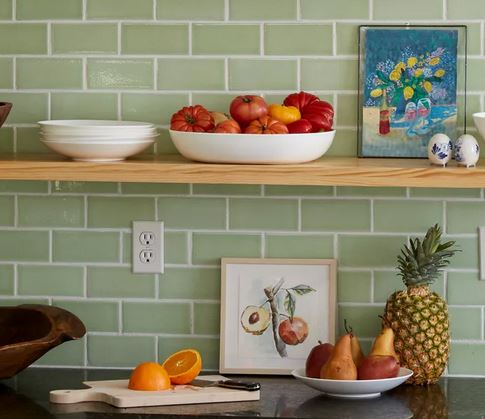Although they’re tiny, gnats can cause a great deal of annoyance inside your home. You may have noticed some floating around your fruit bowl or your favorite houseplant and wondered how they got there in the first place. We’re breaking down exactly what gnats are, where they come from, and how to not only get rid of the ones that are currently buzzing around but also how to prevent gnats from reappearing in the future.
What Are Gnats?
The term gnats refers to small flying insects that may or may not bite. You can rest easy knowing that most indoor gnats are not the biting kind nor are they prone to spreading disease. But still, these unwelcome guests are a nuisance and it’s important to deal with them before an infestation gets worse. The first step to combating gnats is to know what kind of gnat you have buzzing around your space.
These are the three most common types of gnats:
- Fungus gnats are found flying near overwatered houseplants and damp soil
- Fruit flies hover around overly-ripened fruit
- Drain flies (or sewer flies) gather in humid areas such as pipes in the kitchen, bathroom, laundry room, and basement
Gnats breed on decaying, organic matter and moisture, so you’ll need to assess the source of them. This should be relatively obvious, as they tend to gather around the problem, which will aid in identifying their type. Use the following ideas to get rid of gnats and learn how to fend them off for good.
How to Get Rid of Gnats
The good news is that there are multiple ways to eradicate gnats in and around your home. The even better news? Most of these methods are easy, economical, and effective. Here are a few DIY solutions to try.
1. Trap Fruit Flies with Vinegar and Sugar
Chances are you have a bottle of apple cider vinegar and some sugar sitting in your kitchen or pantry, and these two ingredients can help you get rid of gnats. Place a bowl near the infestation and fill it with vinegar before adding a teaspoon of plain sugar, which is what the gnats will be drawn to. The vinegar is what will ultimately kill them, but you also need a way to keep them in the bowl long enough for that to happen. Either cover the bowl with plastic wrap and poke small holes on the top, or add a bit of dish soap to the vinegar and sugar concoction.
If you have an open wine bottle (red works best) that’s gone rancid but you haven’t had the heart to toss it yet, you can swap it for vinegar and follow the rest of the steps.
2. Use Produce That’s Gone Bad
For fruit flies, try a similar method to lure and trap them. Add a few pieces of rotting fruit, such as a banana or apple, to a bowl, cover tightly with plastic wrap, and poke small holes in the plastic so that the gnats can get in but can’t get back out. They’ll eventually die in the homemade trap. This is a good way to remind your household to eat fruit before it starts to spoil.
3. Battle Drain Flies with Bleach
If pests are hovering around the sink drain, grab a bottle of bleach and mix a half cup of it with a full gallon of water. Then, slowly pour the diluted mixture down the drain to kill any gnats and potential larvae. Alternatively, you can use a commercial drain cleaner to produce the same results. Be sure to ventilate the room well after using bleach.
4. Get Rid of Gnats with a Candle
This technique requires you to be on standby after dark, but it’s an easy solution. Fill a pan with water and a bit of dish soap and add a candlestick with a tall, tapered candle in the middle. Light the candle, then make sure the rest of the room is dark. After a while, you’ll notice that the gnats have been drawn to it and ultimately perish by the heat or by dropping into the soapy mixture below.
5. Stock up on Sticky Traps
If all else fails, or you’re not interested in making a DIY solution, simply place store-bought fly paper, cards, or ribbons near where gnats gather. Some of these products are even designed to sit in the soil alongside a potted plant to catch fungus gnats. Once the sticky side is sufficiently filled, toss it and add a new one. You can also try a bug zapper that’s aimed at catching smaller insects or, if the problem really persists, call a reliable pest control company.
Safety Tip: Store-bought sticky traps can be harmful to pets if eaten or chewed on, so be sure to read the packaging carefully and keep an eye on your pets while these are in use. Gordon Beall
How to Prevent Gnats in the Future
Once you’ve successfully eradicated the gnats that have been bothering you, it’s time to focus on prevention. So, how do you stop them from returning? Be sure to implement the following habits on a regular basis to keep gnats at bay.
1. Maintain Low Humidity in your Home
Gnats are attracted to humid and damp environments. So, make sure the AC is working properly in the summer, check for any leaks throughout the house, and add a dehumidifier to any rooms that tend to get damp.
2. Tend to the Trash
Your garbage can, particularly in the kitchen, should have a lid that seals tight when not in use. The trash, along with any indoor compost, should be taken out regularly.
3. Avoid Overwatering Houseplants
The wet soil of indoor pots can create a breeding ground for gnats. So, take it easy on watering them or look into low-maintenance plants that require small amounts of water to thrive.
4. Keep Drains Clean and Dry
This is one of biggest the hotspots for gnats, so pay extra attention to your kitchen sink and drain. Clean it (along with a garbage disposal if you have one) on a consistent basis, keep the area as dry as possible, and use a drain stopper overnight.
More Ways to Prevent Gnats
- If possible, avoid leaving water dishes for the pets out overnight.
- Make sure there are no tears in window screens or any other small openings where gnats can make their way inside.
- Finish fruit up before it becomes overripe, freeze what you can’t use, and store what you can in the refrigerator.
- Immediately wipe up spills on the floors and countertops, especially if sugar is involved (such as from a cup of juice).
- Place any outdoor standing water features (such as bird baths or fountains) as far from the house, and as clean, as possible.






